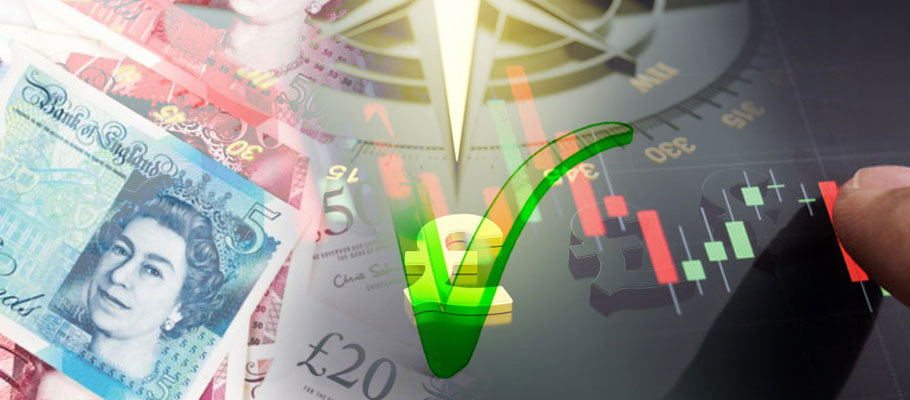
Published: June 28th, 2023
Forex traders have increased their speculative bets on the Pound, believing it's set to strengthen against a backdrop of rising positive sentiment.
Data published this week by the US Commodity Futures Trading Commission (CFTC) shows that bullish positions on GBP rose by USD 3.2 billion in the seven days leading up to Wednesday, 21st June.
There was significant growth in 'long' contracts, with 37,110 new positions indicating growing optimism in the UK currency's prospects.
A ‘long’ position means a trader opens a contract based on a presumed future rise in the price of an underlying asset, in this case the asset being Pounds Sterling.
Analysts at MUFG told Bloomberg that speculative traders have ‘aggressively pursed net-GBP longs’ over the past fortnight. The recent boost has created the biggest net long position on GBP held by Leveraged Funds since September of 2022.
For the seven-day trend noted in the CFTC’s report, it was the biggest one-week jump seen since April 2016. But MUFG analysts believe the cumulative net GBP long is the biggest since 2014.
‘Traders have been slowly leaning into Sterling since April, but the jump seen last week is very significant.’
The surge in bullish Pound positions reflects a growing consensus among leveraged fund investors that the Bank of England’s shift to aggressive monetary tightening will have a positive effect on the currency.
Threadneedle Street surprised investors last week by raising interest rates 50 basis points, a big leap from the successive 25bp hikes seen previously.
Traders are now looking for Britain’s base rate to settle at or above six per cent, meaning the UK would have the highest rate amongst G10 countries.
In May, Sterling gave back gains against the Dollar and Euro following publication of UK wage and employment data that indicated Britain’s labour market had reached a Spring inflexion point.
According to the UK Office of National Statistics (ONS), average UK earnings rose by 6.6 per cent in March, slightly less than the 6.7 per cent figure consensus had expected, but still a shade above April's 6.5 per cent.
With bonuses factored in, the figure was 5.9 per cent, which was anticipated, and holding steady at the previous month’s level.
Bank of England (BoE) policymakers have been especially focused on wage data as they look for signals that UK inflation is becoming embedded. While the numbers are robust, Threadneedle Street may conclude that wage increases are close to reaching a peak, especially if unemployment continues to rise.
Alongside the wage rise, Britain’s unemployment rate increased to 3.8 per cent in March. Consensus had expected unemployment to remain unchanged at the previous month’s 3.7 per cent.
The data may signal that the hot UK labour market may finally be starting to cool, potentially giving the Bank of England breathing space to look again at concluding the current interest rate hiking cycle.
The Pound was unsurprisingly softer in the wake of the data release. The Pound to Dollar rate dropped 0.30 per cent in the 30 minutes following the release to 1.2474. The Pound to Euro rate fell 0.20 per cent in the same period, dropping to 1.1479.
A month later, UBS Bank advised its forex clients to consider long positions on Sterling against the Swiss franc, suggesting a move to 1.14 could be in the offing.
In an analyst note published the w/c 12th June, the bank’s Currency Strategy Unit said the recommendation is supported by solid technical indicators and strong fundamental support.
The note pointed to an attractive valuation for Sterling against the Franc and said the previous downward pressure on GBP could be blamed on political uncertainty and investor perceptions that British monetary policy had become somewhat ‘loose’.
That all changed, UBS said, because UK politics had stabilised and the Bank of England (BoE) was showing stronger commitment to fighting inflation. These positives had yet to be fully reflected in GBP’s valuation but could become evident before the end of the calendar month.
Key to the long trade recommendation was the timing of central bank meetings in both London and Bern. Both had meetings in the calendar before end of June, and UBS believed the trade would perform well as both events drew closer.
Current market consensus is for 100 basis points of additional interest rate rises from Threadneedle Street across the remainder of 2023. UBS says the BoE's resolve to fight inflation has been more steadfast than central banks in other G10 economies.
GBP has tracked higher alongside UK bond yields since the Office of National Statistics published headline inflation of 8.6 per cent in the year to April. That was down from 10 per cent in March, but higher than the 8.2 per cent investors, economists, and analysts were expecting.
In mid-April, Sterling rallied against EUR and USD following publication of March labour and wage figures that revealed headline wages (including bonuses) rose by almost six per cent in the three months between December 2022 and February 2023.
The UK’s Office of National Statistics said the number matches an upwardly revised reading for February, which overshot the consensus expectations of 5.1 per cent.
A market commentary by Barclays said ‘the recent speculation as to whether softening British wage data might prompt the Bank of England to re-schedule its May policy meeting. This week’s wage print suggests probably not. Sterling has received a modest boost from the data.’
If you exclude bonuses from the calculation, the ONS said pay rose in real terms by 6.6 per cent, also ahead of the 6.2 per cent markets anticipated and unchanged on from 6.6 per cent figure.
Threadneedle Street policymakers would have been looking for a clear signal that wage growth was slowing, in order to be convinced that UK inflationary pressures were dissipating.